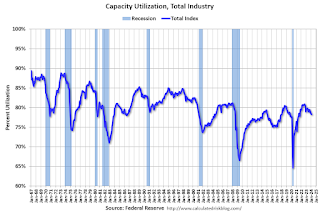Uncategorized
Haverty Furniture’s Recent Dividend Hike Makes It a Perfect Dividend Capture Stock
Management last week declared a 7.1% increase in the quarterly HVT stock dividend rate to be paid in June On … Read more

Management last week declared a 7.1% increase in the quarterly HVT stock dividend rate to be paid in June
On the landscape of dividend capture strategies, where investors seek to seize fleeting profits from dividend payments, one intriguing candidate has emerged from the depths of the stock market. Haverty Furniture Companies, Inc. (NYSE:HVT), a stalwart in the furniture industry, recently announced a 7.1% increase in its quarterly dividend, signaling a potential opportunity for astute dividend hunters.
The company operates 123 showrooms under the “Havertys” brand in 16 states in the South and Midwest. Its founding dates to 1885. The HVT stock price is down 1.1% over the last 12 months.
The next dividend itself is set to be paid on June 21, to stockholders that are on the record as of June 6. This timeline creates a narrow window of opportunity for dividend capture enthusiasts to position themselves strategically in HVT stock.
The strategies’ allure lies in the promise of extracting quick gains from dividend payments, a siren song that beckons those with a hunger for immediate rewards.
Best Capture Candidates
Fintel’s Dividend Capture Strategy model provides a real-time look at upcoming payouts and provides a handy list of the best capture candidates.
The concept is deceptively simple: investors position themselves to capture dividends by purchasing a stock just before the ex-dividend date, allowing them to collect the dividend and then swiftly selling the stock shortly after.
The goal is to profit from the dividend payout while avoiding the long-term commitment to the underlying asset. It is, in essence, a game of timing, where fortunes can be made or lost with the precision of a maestro’s baton.
In the case of Atlanta, Georgia-based Haverty Furniture, the stock is a regular dividend payer that has rewarded investors with income every year since 1935.
The most recent dividend adjustment will see the furniture fim increase its quarterly dividend by two pennies, to 30 cents per share, giving thahe stock an annualized dividend yield of 4.53%, well above the S&P 500 index average 1.66% for quarter ended March 31.
Recovery Days
The dividend analysis page for HVT stock highlights an average of 36 “recovery days,” that is until the share price has risen above after the amount paid.
The chart and table below show how many days it took for the share price to recover after each of the quarterly dividends since mid-2020. We can see that the data is skewed by a few outliers and that three quarters of the time, the stock has recovered the price within four trading days, making it a solid candidate for the strategy.

The stock also features quite highly on Fintel’s dividend screener and leaderboard in 175th ranking with a score of 90.69.
This score is based on the stock having a cash-from-operations payout ratio of 0.83 and has exhibited robust growth in the dividend rate over the last three years.
The payout ratio has risen in recent quarters as the cash flow generation from operations has decreased from recent highs achieved during the pandemic. While declining cash flows are concerning, the reduction of cash flows from debt (financing) has also decreased during the same period.
The cash flow analysis has been illustrated in the chart below from the financial metrics and ratios page for HVT.

The company’s first-quarter results for 2023 in early May revealed a decline in EPS to $0.74 per share from $1.11 last year. Consolidated sales experienced a 5.9% dip to $224.8 million, while comparable-store sales saw a 6.7% decline. Despite these challenges, Haverty still reported an increase in its gross profit margin slightly to 59.1% from the previous year’s 59.0%.
In the face of shifting consumer spending patterns and persistent inflationary pressures, Haverty chairman and CEO, Clarence H. Smith, acknowledged the headwinds the company encountered during the quarter. Notably, he highlighted a reduction in traffic and written business, which reflected the transition from the explosive pace witnessed during the pandemic to a more measured growth trajectory.
Income Absent Commitment
By purchasing the stock just before the ex-dividend date and promptly selling it afterward, investors can potentially capture the dividend while avoiding a long-term commitment to the company.
However, as with any endeavor, risks abound in the realm of dividend capture. Markets are known for their fickleness, and a strategy built on fleeting gains can be a precarious foundation. Price fluctuations, unpredictable market conditions, and transaction costs all conspire to test the mettle of even the most seasoned investor. The quest for easy profits can quickly transform into a disheartening ordeal if caution is not exercised.
Yet, for those who can master this delicate dance, the rewards can be sweet. Dividend capture strategies can provide a steady stream of income, a consistent drumbeat of profits that can outperform traditional buy-and-hold approaches. By skillfully moving in and out of positions at precisely the right moment, investors can compound their gains, creating a symphony of wealth that resonates throughout their portfolio.
The post Haverty Furniture’s Recent Dividend Hike Makes It a Perfect Dividend Capture Stock appeared first on Fintel.
sp 500 pandemic recovery consumer spendingUncategorized
Fast-food chain closes restaurants after Chapter 11 bankruptcy
Several major fast-food chains recently have struggled to keep restaurants open.

Competition in the fast-food space has been brutal as operators deal with inflation, consumers who are worried about the economy and their jobs and, in recent months, the falling cost of eating at home.
Add in that many fast-food chains took on more debt during the covid pandemic and that labor costs are rising, and you have a perfect storm of problems.
It's a situation where Restaurant Brands International (QSR) has suffered as much as any company.
Related: Wendy's menu drops a fan favorite item, adds something new
Three major Burger King franchise operators filed for bankruptcy in 2023, and the chain saw hundreds of stores close. It also saw multiple Popeyes franchisees move into bankruptcy, with dozens of locations closing.
RBI also stepped in and purchased one of its key franchisees.
"Carrols is the largest Burger King franchisee in the United States today, operating 1,022 Burger King restaurants in 23 states that generated approximately $1.8 billion of system sales during the 12 months ended Sept. 30, 2023," RBI said in a news release. Carrols also owns and operates 60 Popeyes restaurants in six states."
The multichain company made the move after two of its large franchisees, Premier Kings and Meridian, saw multiple locations not purchased when they reached auction after Chapter 11 bankruptcy filings. In that case, RBI bought select locations but allowed others to close.

Image source: Chen Jianli/Xinhua via Getty
Another fast-food chain faces bankruptcy problems
Bojangles may not be as big a name as Burger King or Popeye's, but it's a popular chain with more than 800 restaurants in eight states.
"Bojangles is a Carolina-born restaurant chain specializing in craveable Southern chicken, biscuits and tea made fresh daily from real recipes, and with a friendly smile," the chain says on its website. "Founded in 1977 as a single location in Charlotte, our beloved brand continues to grow nationwide."
Like RBI, Bojangles uses a franchise model, which makes it dependent on the financial health of its operators. The company ultimately saw all its Maryland locations close due to the financial situation of one of its franchisees.
Unlike. RBI, Bojangles is not public — it was taken private by Durational Capital Management LP and Jordan Co. in 2018 — which means the company does not disclose its financial information to the public.
That makes it hard to know whether overall softness for the brand contributed to the chain seeing its five Maryland locations after a Chapter 11 bankruptcy filing.
Bojangles has a messy bankruptcy situation
Even though the locations still appear on the Bojangles website, they have been shuttered since late 2023. The locations were operated by Salim Kakakhail and Yavir Akbar Durranni. The partners operated under a variety of LLCs, including ABS Network, according to local news channel WUSA9.
The station reported that the owners face a state investigation over complaints of wage theft and fraudulent W2s. In November Durranni and ABS Network filed for bankruptcy in New Jersey, WUSA9 reported.
"Not only do former employees say these men owe them money, WUSA9 learned the former owners owe the state, too, and have over $69,000 in back property taxes."
Former employees also say that the restaurant would regularly purchase fried chicken from Popeyes and Safeway when it ran out in their stores, the station reported.
Bojangles sent the station a comment on the situation.
"The franchisee is no longer in the Bojangles system," the company said. "However, it is important to note in your coverage that franchisees are independent business owners who are licensed to operate a brand but have autonomy over many aspects of their business, including hiring employees and payroll responsibilities."
Kakakhail and Durranni did not respond to multiple requests for comment from WUSA9.
bankruptcy pandemicUncategorized
Industrial Production Increased 0.1% in February
From the Fed: Industrial Production and Capacity Utilization
Industrial production edged up 0.1 percent in February after declining 0.5 percent in January. In February, the output of manufacturing rose 0.8 percent and the index for mining climbed 2.2 p…

Industrial production edged up 0.1 percent in February after declining 0.5 percent in January. In February, the output of manufacturing rose 0.8 percent and the index for mining climbed 2.2 percent. Both gains partly reflected recoveries from weather-related declines in January. The index for utilities fell 7.5 percent in February because of warmer-than-typical temperatures. At 102.3 percent of its 2017 average, total industrial production in February was 0.2 percent below its year-earlier level. Capacity utilization for the industrial sector remained at 78.3 percent in February, a rate that is 1.3 percentage points below its long-run (1972–2023) average.Click on graph for larger image.
emphasis added
This graph shows Capacity Utilization. This series is up from the record low set in April 2020, and above the level in February 2020 (pre-pandemic).
Capacity utilization at 78.3% is 1.3% below the average from 1972 to 2022. This was below consensus expectations.
Note: y-axis doesn't start at zero to better show the change.
 The second graph shows industrial production since 1967.
The second graph shows industrial production since 1967.Industrial production increased to 102.3. This is above the pre-pandemic level.
Industrial production was above consensus expectations.
Uncategorized
Southwest and United Airlines have bad news for passengers
Both airlines are facing the same problem, one that could lead to higher airfares and fewer flight options.

Airlines operate in a market that's dictated by supply and demand: If more people want to fly a specific route than there are available seats, then tickets on those flights cost more.
That makes scheduling and predicting demand a huge part of maximizing revenue for airlines. There are, however, numerous factors that go into how airlines decide which flights to put on the schedule.
Related: Major airline faces Chapter 11 bankruptcy concerns
Every airport has only a certain number of gates, flight slots and runway capacity, limiting carriers' flexibility. That's why during times of high demand — like flights to Las Vegas during Super Bowl week — do not usually translate to airlines sending more planes to and from that destination.
Airlines generally do try to add capacity every year. That's become challenging as Boeing has struggled to keep up with demand for new airplanes. If you can't add airplanes, you can't grow your business. That's caused problems for the entire industry.
Every airline retires planes each year. In general, those get replaced by newer, better models that offer more efficiency and, in most cases, better passenger amenities.
If an airline can't get the planes it had hoped to add to its fleet in a given year, it can face capacity problems. And it's a problem that both Southwest Airlines (LUV) and United Airlines have addressed in a way that's inevitable but bad for passengers.
Image source: Kevin Dietsch/Getty Images
Southwest slows down its pilot hiring
In 2023, Southwest made a huge push to hire pilots. The airline lost thousands of pilots to retirement during the covid pandemic and it needed to replace them in order to build back to its 2019 capacity.
The airline successfully did that but will not continue that trend in 2024.
"Southwest plans to hire approximately 350 pilots this year, and no new-hire classes are scheduled after this month," Travel Weekly reported. "Last year, Southwest hired 1,916 pilots, according to pilot recruitment advisory firm Future & Active Pilot Advisors. The airline hired 1,140 pilots in 2022."
The slowdown in hiring directly relates to the airline expecting to grow capacity only in the low-single-digits percent in 2024.
"Moving into 2024, there is continued uncertainty around the timing of expected Boeing deliveries and the certification of the Max 7 aircraft. Our fleet plans remain nimble and currently differs from our contractual order book with Boeing," Southwest Airlines Chief Financial Officer Tammy Romo said during the airline's fourth-quarter-earnings call.
"We are planning for 79 aircraft deliveries this year and expect to retire roughly 45 700 and 4 800, resulting in a net expected increase of 30 aircraft this year."
That's very modest growth, which should not be enough of an increase in capacity to lower prices in any significant way.
United Airlines pauses pilot hiring
Boeing's (BA) struggles have had wide impact across the industry. United Airlines has also said it was going to pause hiring new pilots through the end of May.
United (UAL) Fight Operations Vice President Marc Champion explained the situation in a memo to the airline's staff.
"As you know, United has hundreds of new planes on order, and while we remain on path to be the fastest-growing airline in the industry, we just won't grow as fast as we thought we would in 2024 due to continued delays at Boeing," he said.
"For example, we had contractual deliveries for 80 Max 10s this year alone, but those aircraft aren't even certified yet, and it's impossible to know when they will arrive."
That's another blow to consumers hoping that multiple major carriers would grow capacity, putting pressure on fares. Until Boeing can get back on track, it's unlikely that competition between the large airlines will lead to lower fares.
In fact, it's possible that consumer demand will grow more than airline capacity which could push prices higher.
Related: Veteran fund manager picks favorite stocks for 2024
bankruptcy pandemic stocks-

 Uncategorized3 weeks ago
Uncategorized3 weeks agoAll Of The Elements Are In Place For An Economic Crisis Of Staggering Proportions
-

 International1 week ago
International1 week agoEyePoint poaches medical chief from Apellis; Sandoz CFO, longtime BioNTech exec to retire
-

 Uncategorized4 weeks ago
Uncategorized4 weeks agoCalifornia Counties Could Be Forced To Pay $300 Million To Cover COVID-Era Program
-

 Uncategorized3 weeks ago
Uncategorized3 weeks agoApparel Retailer Express Moving Toward Bankruptcy
-

 Uncategorized4 weeks ago
Uncategorized4 weeks agoIndustrial Production Decreased 0.1% in January
-

 International1 week ago
International1 week agoWalmart launches clever answer to Target’s new membership program
-

 Spread & Containment2 days ago
Spread & Containment2 days agoIFM’s Hat Trick and Reflections On Option-To-Buy M&A
-

 Uncategorized4 weeks ago
Uncategorized4 weeks agoRFK Jr: The Wuhan Cover-Up & The Rise Of The Biowarfare-Industrial Complex



















